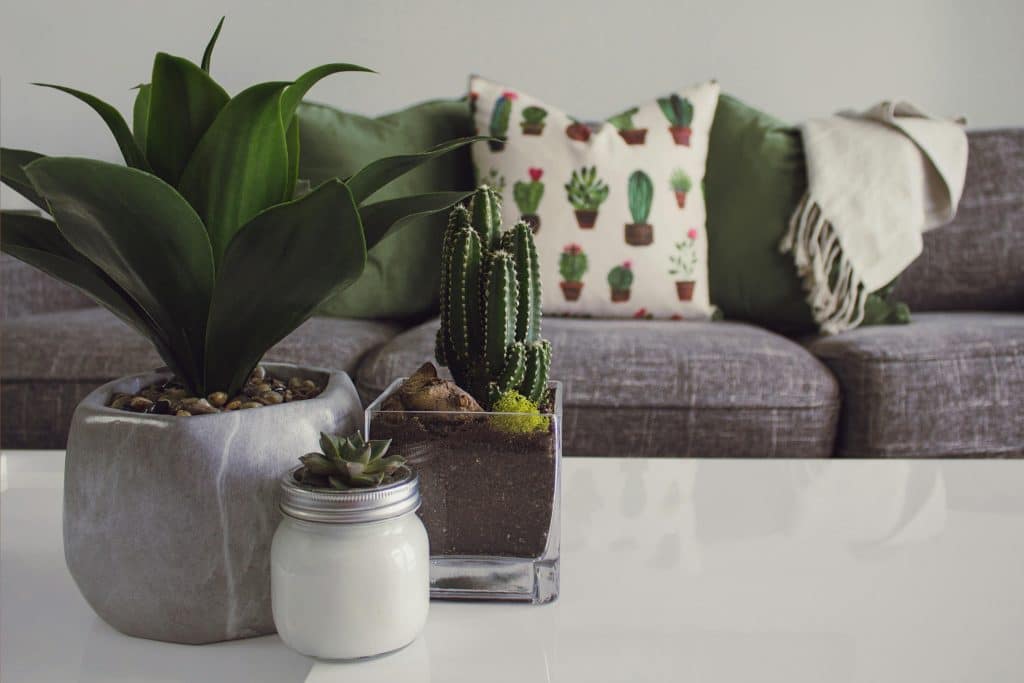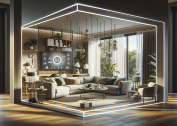In a world overwhelmed by constant digital noise and nonstop connectivity, creating a home sanctuary has become more important than ever. This emerging trend recognizes that digital detoxes lead to deeper mental clarity, and a thoughtfully designed home environment plays a crucial role in supporting that clarity. By making simple changes at home, individuals can foster calm, focus, and reflection—essential components for mental well-being in the digital age.
This article explores practical, easy-to-implement ways to turn your living space into a sanctuary that promotes mental clarity, supports digital detox practices, and ultimately improves your overall quality of life.

Why Creating a Home Sanctuary Matters for Mental Clarity
The average adult spends about 90% of their time indoors. Our homes are the primary spaces where we unwind, recharge, and prepare for daily challenges. Yet, many homes are cluttered, overstimulating, or poorly arranged, which can contribute to mental fatigue rather than relief.
When paired with intentional digital detoxes—periods without screens or technology—home sanctuaries become even more effective in enhancing mental clarity. Research shows that reducing digital distractions in a calming environment supports focus, reduces anxiety, and fosters deeper reflection
A home sanctuary is not about expensive renovations or luxury design. Instead, it is about creating an atmosphere conducive to mental clarity and peace through simple, mindful changes.
Simple Changes to Create a Home Sanctuary That Supports Digital Detoxes
Here are practical strategies to transform your home into a space that encourages quiet reflection and mental clarity:
1. Declutter and Organize to Reduce Mental Noise
Visual clutter can increase stress and distract the mind. According to a study from the University of California, cluttered environments are linked to higher cortisol levels, a hormone associated with stress3.
- Start by removing unnecessary items from living spaces.
- Organize belongings with storage solutions that keep surfaces clear.
- Maintain a regular tidying routine to prevent clutter buildup.
A clean, organized space allows your mind to relax and focus during digital detox periods.
2. Designate Tech-Free Zones
Creating areas in your home where digital devices are not allowed reinforces the practice of digital detoxes, encouraging mental clarity.
- Establish a reading nook or meditation corner free of screens.
- Keep bedrooms as technology-free zones to improve sleep quality.
- Use baskets or charging stations outside these zones to collect devices.
These boundaries help break the cycle of constant digital input and foster intentional moments of quiet.
3. Use Natural Elements to Foster Calm
Incorporating natural materials and plants into your home design has proven psychological benefits.
- Indoor plants improve air quality and create a calming visual effect.
- Natural light exposure regulates circadian rhythms, improving mood and focus.
- Materials like wood, stone, and cotton add warmth and texture that soothe the senses.
Biophilic design, the practice of connecting with nature indoors, supports mental clarity and complements digital detox efforts.
4. Simplify Your Color Palette
Colors influence mood and mental states. Soft, neutral tones promote relaxation and concentration, while bright or overly saturated colors may increase stimulation.
- Opt for calming shades like soft blues, greens, or earth tones.
- Use color strategically in rooms designated for relaxation and reflection.
A simple color palette contributes to an environment conducive to mental clarity.
5. Incorporate Comfortable Seating and Mindful Spaces
Comfort encourages lingering in quiet reflection. Creating a dedicated space to sit, think, or meditate enhances the benefits of digital detoxes.
- Choose ergonomic chairs or cushions for reading or meditation.
- Keep the space free from distractions and noise where possible.
- Add elements like soft lighting or soothing sounds to deepen relaxation.
Having a go-to sanctuary spot reinforces regular moments of mental clarity.
How Digital Detoxes Lead to Deeper Mental Clarity in Your Sanctuary
By combining a calming home environment with regular digital detoxes, you create a powerful formula for mental clarity. Digital detoxes reduce cognitive overload from screens, while the sanctuary environment nurtures reflection and peace.
Studies confirm that reduced screen time combined with a serene setting lowers stress markers and improves attention span. Quiet reflection supported by your home sanctuary engages the brain’s default mode network, which is crucial for problem-solving and creativity.
Simple home changes make it easier to sustain digital detox habits and enjoy lasting mental benefits.
Additional Tips for Sustaining Your Home Sanctuary and Digital Detox Practice
1. Schedule Regular Detox Periods
Consistency matters. Block out daily or weekly time frames for digital-free moments, such as mealtimes, mornings, or before bed.
2. Use Technology Mindfully
When using devices, choose settings that minimize distractions—turn off non-essential notifications and use apps that monitor or limit screen time.
3. Engage in Offline Activities
Encourage hobbies that do not involve screens, such as journaling, cooking, or crafting, within your sanctuary space.
4. Invite Family or Housemates to Join
Creating a shared sanctuary culture strengthens digital detox efforts and promotes mental clarity for everyone in the household.
Conclusion
Creating a home sanctuary through simple changes is a practical and effective way to harness the power of digital detoxes to lead to deeper mental clarity. By reducing clutter, establishing tech-free zones, embracing natural elements, simplifying colors, and fostering comfortable spaces, your home can become a supportive environment for quiet reflection and cognitive renewal.
As digital distractions continue to challenge our focus and well-being, intentionally shaping your living space for mental clarity is a trend worth embracing. These changes do not require significant expense or time but can make a meaningful difference in how you experience calm and concentration each day.
References
- U.S. Environmental Protection Agency. (2021). The Inside Story: A Guide to Indoor Air Quality. https://www.epa.gov/indoor-air-quality-iaq
- Pew Research Center. (2023). Americans’ attitudes toward screen time and digital detoxes. https://www.pewresearch.org/internet/2023/01/12/screen-time-attitudes/
- Kellert, S. R., & Calabrese, E. F. (2015). The Practice of Biophilic Design. https://www.biophilic-design.com









